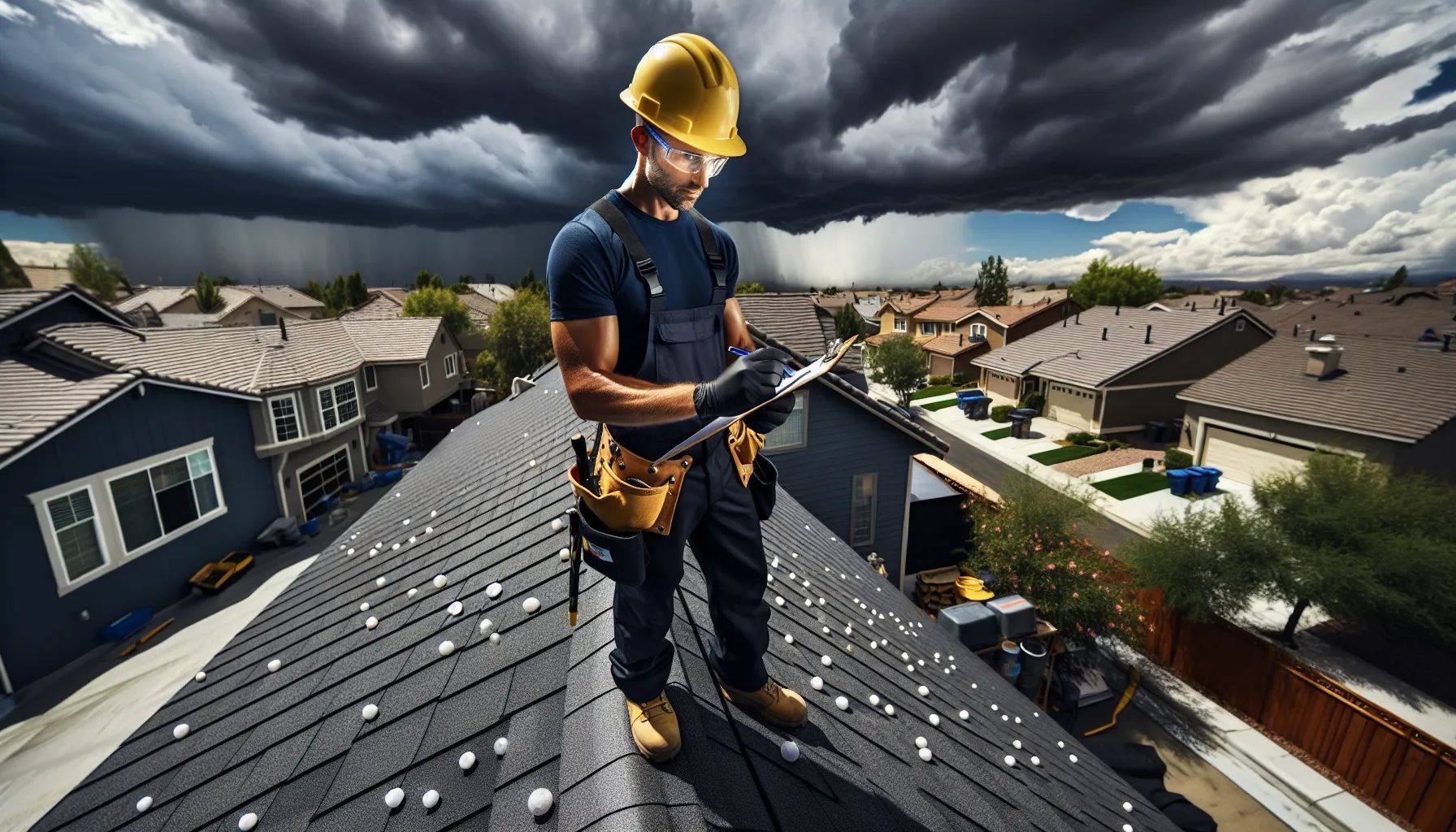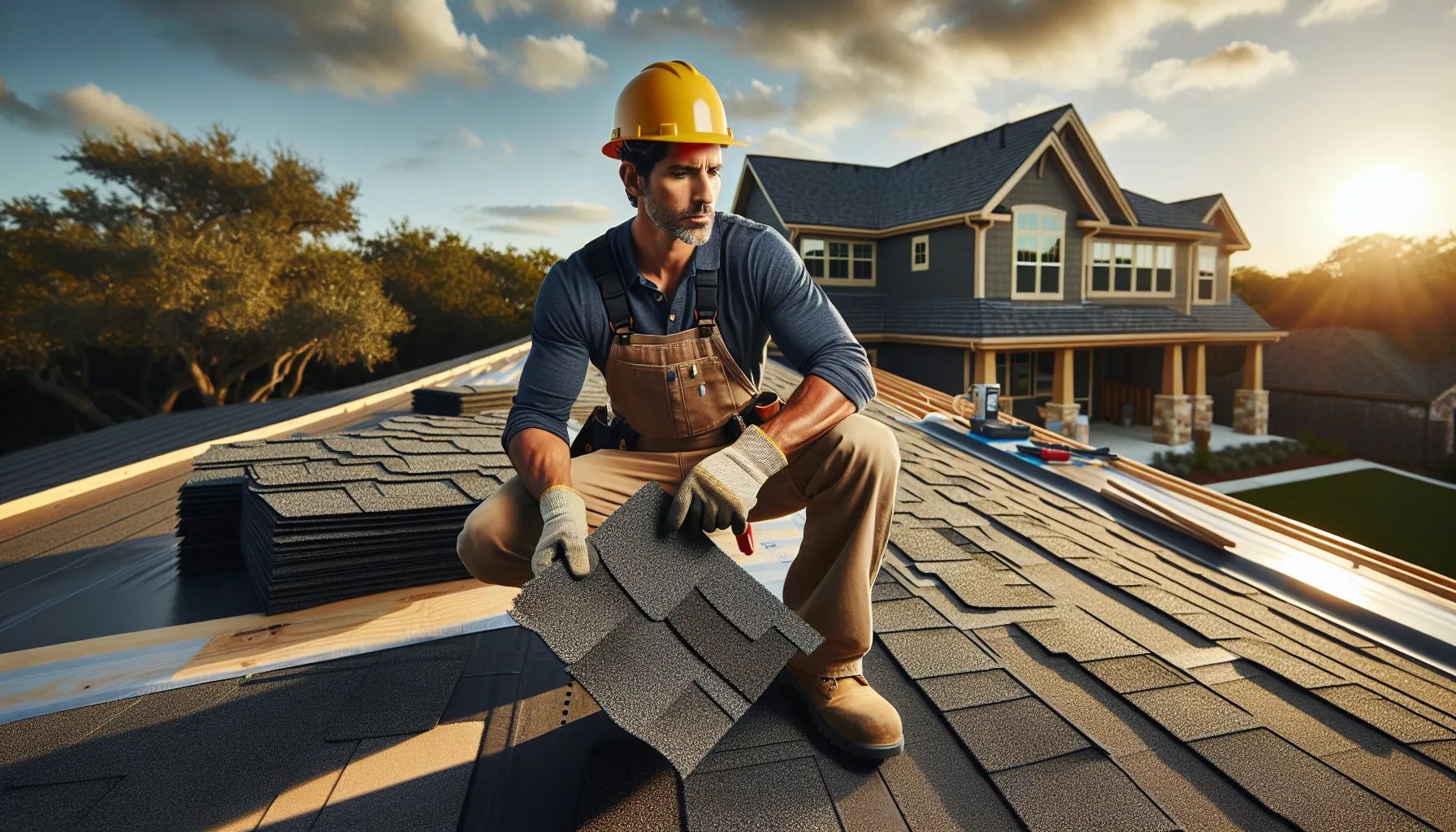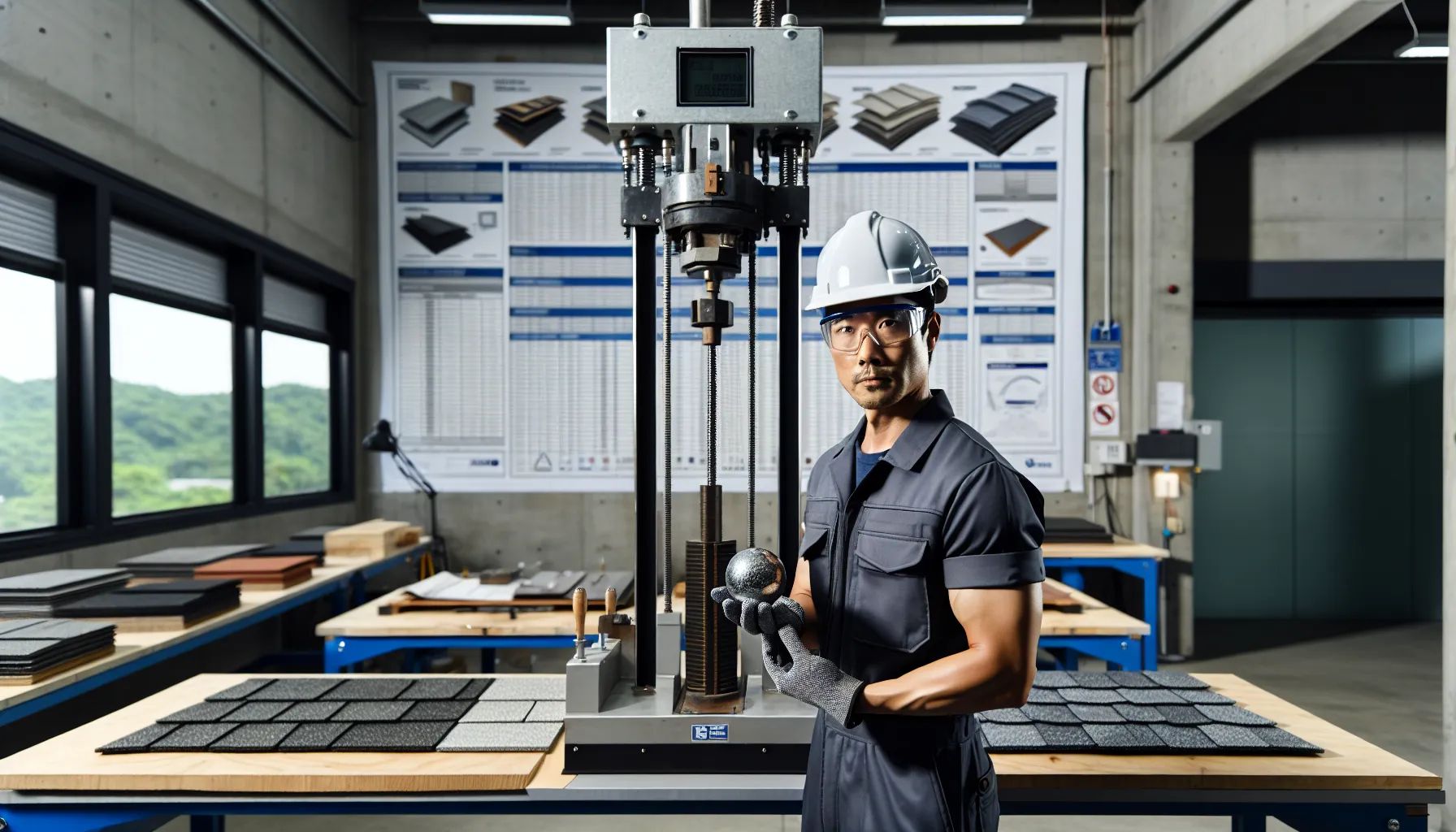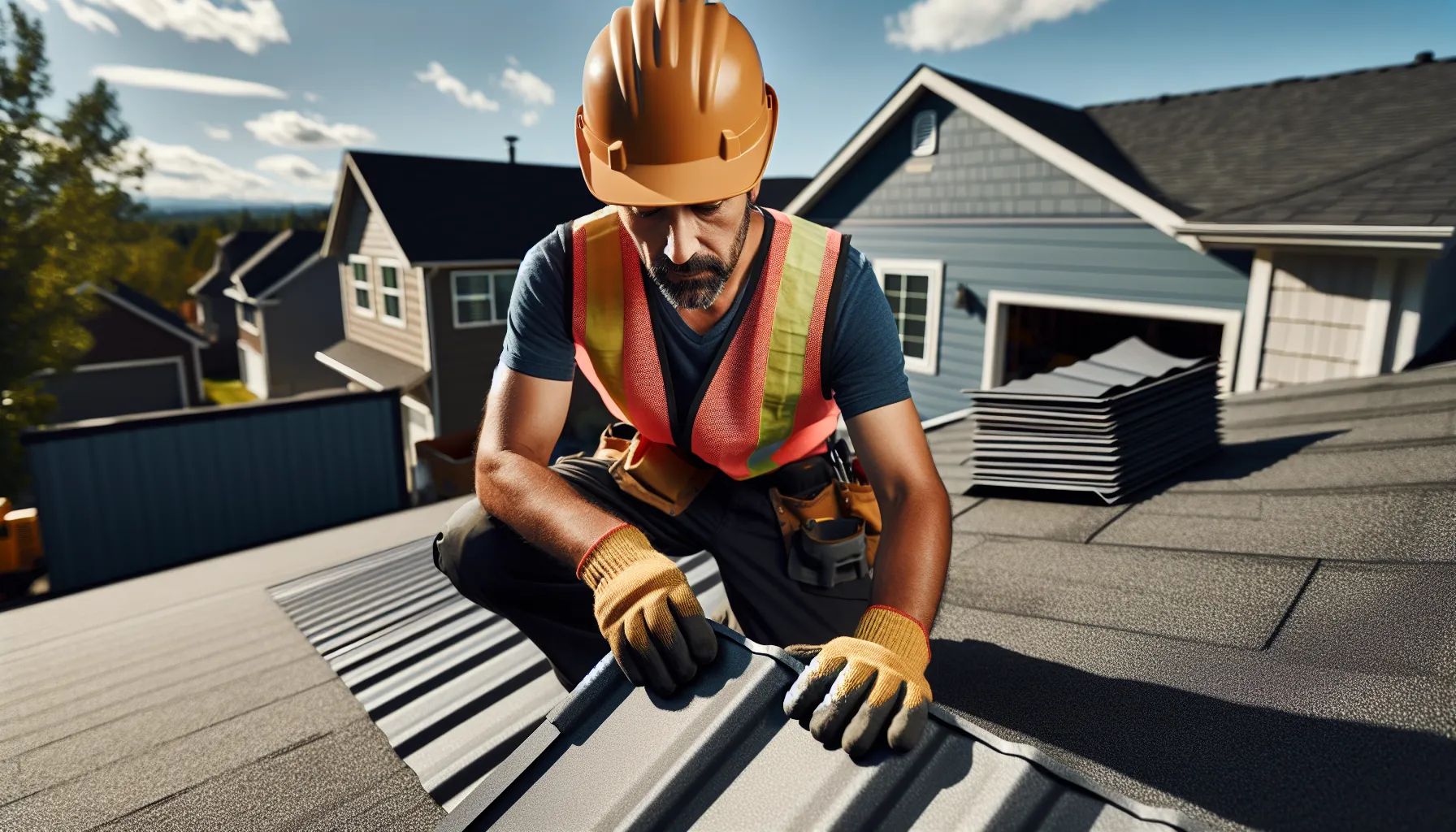What Is An Impact Resistant Roof

An impact resistant roof is a roofing system built to handle extreme weather conditions like hailstorms, high winds, and flying debris. We've seen firsthand how these specialized roofing materials can make the difference between minor damage and catastrophic failure during severe weather events. These systems use advanced materials and construction methods that significantly increase durability compared to standard roofing options.
Understanding Impact Resistant Roofing Systems

Impact resistant roofing systems function as protective armor for homes. We design these systems to absorb and distribute the force from impacts, preventing penetration and structural damage. The technology behind these roofs involves multiple layers working together - from the decking underneath to the outer protective surface.
These roofing systems differ from standard options in several key ways. First, they use stronger base materials that resist puncturing and tearing. Second, the installation methods often include additional fasteners and reinforcement points. Third, the surface materials themselves have enhanced flexibility or hardness depending on the specific product type.
We've observed that homes with impact resistant roofing experience fewer leaks, maintain their appearance longer, and require less frequent repairs. The investment in these systems pays dividends through reduced maintenance costs and extended replacement cycles. Property values also tend to remain more stable in severe weather zones when equipped with these protective systems.
How Impact Resistance Is Measured And Rated

The roofing industry uses standardized testing protocols to measure and rate impact resistance. We rely primarily on two organizations for these standards: Underwriters Laboratories (UL) and FM Approvals. Both organizations have developed comprehensive testing procedures that simulate real-world impact scenarios.
The rating process involves subjecting roofing samples to controlled impacts under laboratory conditions. Technicians examine the materials before and after testing for signs of damage, including cracks, punctures, or structural failure. These tests help us predict how materials will perform during actual weather events.
Class Ratings And Testing Standards
Roofing materials receive classifications from Class 1 through Class 4, with higher numbers indicating greater resistance. Class 1 materials withstand impacts from 1.25-inch steel balls dropped from 12 feet. Class 2 handles 1.5-inch balls from 15 feet. Class 3 resists 1.75-inch balls from 17 feet. And Class 4 - the highest rating - survives 2-inch steel balls dropped from 20 feet without cracking.
We recommend Class 4 materials for areas prone to severe hailstorms. These products have proven their ability to withstand impacts equivalent to baseball-sized hail traveling at terminal velocity. The classification system helps homeowners and contractors make informed decisions based on regional weather patterns and risk factors.
UL 2218 Testing Methodology
The UL 2218 test stands as the industry benchmark for impact resistance evaluation. During this test, technicians mount roofing samples on a testing deck that simulates actual roof construction. They then drop steel balls of various sizes from predetermined heights onto different areas of the sample.
Each sample must survive multiple impacts without showing visible cracks or ruptures. Inspectors examine the underside of the material for any signs of damage that might compromise water resistance. The test also evaluates whether the material maintains its protective qualities after impact, not just whether it survives the initial blow.
We find that materials passing UL 2218 Class 4 testing provide exceptional protection. These products have demonstrated resistance to impacts that would destroy conventional roofing materials. The rigorous nature of this testing gives us confidence when recommending these products to clients in high-risk areas.
Types Of Impact Resistant Roofing Materials

The market offers several categories of impact resistant roofing materials, each with unique properties and advantages. We've installed thousands of square feet of these various options and can speak to their real-world performance characteristics. The choice between materials often depends on factors including climate, architectural style, budget, and local building codes.
Metal Roofing Options
Metal roofing consistently ranks among the most impact resistant options available. Steel, aluminum, and copper panels can deflect hailstones and debris without sustaining damage that compromises their protective function. Most metal roofing products achieve Class 4 impact ratings when properly installed.
We particularly appreciate metal roofing's combination of strength and lightweight properties. The panels interlock to create a continuous protective surface that distributes impact forces across a wider area. Stone-coated steel options add an extra layer of protection while providing aesthetic variety that mimics traditional roofing styles.
The longevity of metal roofing adds to its appeal. With proper installation, these systems can last 50 years or more while maintaining their impact resistance properties. The materials don't degrade from UV exposure like some alternatives, and they resist fire, insects, and rot.
Modified Asphalt Shingles
Modified asphalt shingles incorporate rubber-like polymers that enhance flexibility and impact absorption. We've seen these products bounce back from impacts that would shatter traditional asphalt shingles. The polymer modification process creates a material that bends rather than breaks under stress.
These shingles come in two main varieties: SBS (styrene-butadiene-styrene) and APP (atactic polypropylene) modified products. SBS shingles offer superior flexibility in cold weather, while APP shingles provide better high-temperature performance. Both types significantly outperform standard asphalt shingles in impact tests.
Installation techniques for modified asphalt shingles closely resemble those for traditional shingles, making them accessible to most roofing contractors. The familiar appearance appeals to homeowners who want impact protection without drastically changing their home's aesthetic. Costs typically fall between standard shingles and premium metal options.
Synthetic And Composite Materials
Synthetic and composite roofing materials represent the cutting edge of impact resistant technology. These products combine recycled rubber, plastics, and resins to create materials that mimic traditional roofing while providing superior protection. We've installed synthetic slate and shake products that look virtually identical to natural materials but offer Class 4 impact ratings.
The manufacturing process for synthetics allows precise control over material properties. Engineers can adjust thickness, density, and flexibility to optimize impact resistance while maintaining workability. Some products include UV inhibitors and colorants that ensure long-term appearance stability.
Environmental considerations make synthetics increasingly attractive. Many products contain recycled materials, reducing landfill waste. Their durability means less frequent replacement, further reducing environmental impact. And unlike natural slate or wood, synthetic materials don't require harvesting natural resources.
Benefits Of Installing Impact Resistant Roofing
Installing impact resistant roofing delivers multiple advantages beyond basic weather protection. We've tracked the performance of these systems over decades and consistently observe superior outcomes compared to standard roofing materials. Homeowners who invest in these systems report high satisfaction levels and fewer weather-related concerns.
Weather Protection And Durability
Impact resistant roofs excel at protecting homes during severe weather events. The materials maintain their integrity when struck by hail, windborne debris, or falling branches. We've inspected roofs after major storms where impact resistant materials showed minimal damage while neighboring standard roofs required complete replacement.
Durability extends beyond impact resistance. These materials resist degradation from UV radiation, temperature fluctuations, and moisture exposure. The robust construction means fewer weak points where water can infiltrate. Properly installed systems can maintain their protective qualities for 30 years or longer, with some metal options lasting 50 years or more.
Wind resistance represents another crucial benefit. Impact resistant materials typically feature enhanced attachment systems that prevent wind uplift. During hurricanes and tornadoes, we've seen these roofs remain intact while standard roofs suffered catastrophic failure. This comprehensive protection provides peace of mind during severe weather seasons.
Insurance Premium Reductions
Insurance companies recognize the value of impact resistant roofing through premium discounts. We regularly help clients document their roofing upgrades to qualify for these reductions. Discounts can range from 5% to 33% depending on the insurance carrier, location, and specific materials installed.
The financial mathematics favor impact resistant roofing in severe weather zones. A homeowner paying $3,000 annually for insurance might save $300 to $1,000 per year with a Class 4 roof. Over a 20-year period, these savings can offset much of the initial investment in upgraded materials.
Some states mandate insurance discounts for impact resistant roofing. Texas, for example, requires insurers to offer reduced rates for homes with qualifying roofs. We help clients navigate these requirements and ensure their installations meet all necessary criteria for maximum savings.
Cost Considerations And Installation Process
Impact resistant roofing requires a larger upfront investment than standard materials. We typically see costs ranging from 20% to 70% higher depending on the specific products chosen. Metal roofing might cost $450 to $1,200 per square (100 square feet), while modified asphalt shingles range from $350 to $600 per square.
Installation complexity varies by material type but generally requires experienced contractors familiar with the specific products. Metal roofing installation demands precision in panel alignment and fastening. Modified shingles need proper adhesive application and temperature considerations. Synthetic materials often require specialized cutting tools and techniques.
We approach each installation with careful planning. Site preparation includes inspecting and reinforcing the roof deck if necessary. Proper underlayment selection provides an additional protective layer. Flashing details around penetrations and edges receive extra attention since these areas often fail first during severe weather.
The installation timeline depends on roof size and complexity. A typical residential project takes 2-5 days for a professional crew. Weather conditions can affect scheduling, particularly for materials requiring specific temperature ranges for proper adhesion. We coordinate with homeowners to minimize disruption while ensuring quality installation.
Long-term cost analysis shows impact resistant roofing often costs less over its lifetime. Reduced repair frequency, lower insurance premiums, and extended replacement cycles contribute to overall savings. We help clients calculate total cost of ownership to make informed decisions about their roofing investments.
Maintenance Requirements And Lifespan
Impact resistant roofs require less maintenance than standard roofing materials, but regular inspections remain important. We recommend annual professional inspections to identify any issues before they become serious problems. These inspections focus on fasteners, seals, and flashing details that might need attention.
Routine maintenance tasks include clearing debris from valleys and gutters to ensure proper drainage. Tree branches should be trimmed away from the roof surface to prevent abrasion during wind events. We check for any loose fasteners or lifted edges that might compromise the system's integrity.
The lifespan of impact resistant roofing varies by material type and environmental conditions. Metal roofs commonly last 40-70 years with minimal maintenance. Modified asphalt shingles typically provide 25-30 years of service. Synthetic materials often carry 30-50 year warranties, though real-world performance data continues to accumulate as these products are relatively new.
Proper ventilation plays a crucial role in maximizing lifespan. We ensure adequate intake and exhaust ventilation to prevent heat buildup and moisture accumulation. Poor ventilation can void warranties and significantly reduce the expected service life of any roofing material.
Repair procedures for impact resistant materials differ from standard roofing. Metal panels might require specialized tools and matching materials. Modified shingles need compatible adhesives and proper heat application. We maintain relationships with manufacturers to ensure repair materials remain available throughout the roof's service life.
Conclusion
Impact resistant roofing represents a smart investment for homeowners in regions prone to severe weather. We've seen these systems transform how homes weather storms, providing protection that standard materials simply can't match. The combination of superior durability, insurance savings, and reduced maintenance creates compelling value even though higher initial costs.
The technology continues advancing as manufacturers develop new materials and installation techniques. We stay current with these developments to offer clients the best available options. Future innovations promise even better performance at potentially lower costs as production scales increase.
Homeowners considering impact resistant roofing should evaluate their specific risk factors and financial situation. We help clients analyze weather patterns, insurance policies, and budget constraints to determine the most appropriate solution. The decision often becomes clear when comparing long-term costs and benefits.
For those living in hail alleys, hurricane zones, or areas with frequent severe storms, impact resistant roofing isn't just an upgrade - it's essential protection. We've witnessed too many preventable roof failures to recommend anything less than Class 4 materials in high-risk areas. The peace of mind alone justifies the investment for many homeowners.
What is an impact resistant roof and how does it work?
An impact resistant roof is a specialized roofing system built to withstand extreme weather conditions like hailstorms, high winds, and flying debris. It functions as protective armor using advanced materials and multiple layers that absorb and distribute impact forces, preventing penetration and structural damage to your home.
How much can I save on insurance with an impact resistant roof?
Insurance companies offer premium discounts ranging from 5% to 33% for impact resistant roofing. For example, a homeowner paying $3,000 annually might save $300 to $1,000 per year with a Class 4 roof, potentially offsetting much of the initial investment over 20 years.
What are the best impact resistant roofing materials available?
The top impact resistant roofing materials include metal roofing (steel, aluminum, copper), modified asphalt shingles with rubber-like polymers, and synthetic composite materials. Metal roofs can last 50+ years, while modified asphalt and synthetics offer Class 4 ratings with 25-50 year lifespans.
Is impact resistant roofing required by building codes?
Building code requirements for impact resistant roofing vary by location and regional weather risks. Areas prone to severe hailstorms, hurricanes, or tornadoes often have stricter requirements. Some states like Texas mandate insurance discounts for qualifying impact resistant roofs, though specific code requirements depend on local regulations.
How long does it take to install an impact resistant roof?
A typical residential impact resistant roof installation takes 2-5 days for a professional crew, depending on roof size and complexity. Weather conditions can affect scheduling, particularly for materials requiring specific temperature ranges for proper adhesion. Proper installation is crucial for maintaining impact resistance ratings.
Can impact resistant shingles be repaired or do they need full replacement after damage?
Impact resistant shingles can often be repaired without full replacement, though repair procedures differ from standard roofing. Metal panels might require specialized tools and matching materials, while modified shingles need compatible adhesives and proper heat application. Regular annual inspections help identify issues before major repairs are needed.

